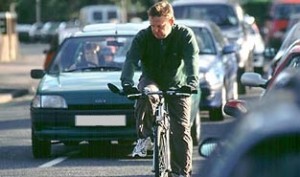 Research finds that air pollution affects breathing ability after commuting to and from work by car and bus but not on a bicycle.
Research finds that air pollution affects breathing ability after commuting to and from work by car and bus but not on a bicycle.
The research article entitled “Respiratory Effects of Commuters’ Exposure to Air Pollution in Traffic”, was published by Epidemiology.
The full-text article is available from a link on the US Environmental Health News website. Please note that you have to be a subsrciber of OvidSP, Athens, LWW or Adis Journals to gain access to the full-text article.
Source: US Environmental Health News
Abstract is reporduced below
Background: Much time is spent in traffic, especially during rush hours, when air pollution concentrations on roads are relatively high. Controlled exposure studies have shown acute respiratory effects of short, high exposures to air pollution from motor vehicles. Acute health effects of lower real-life exposures in traffic are unclear.
Methods: Exposures of 34 healthy, nonsmoking adult volunteers were repeatedly measured while commuting for 2 hours by bus, car, or bicycle. Particle number (PN), particulate matter (PM2.5 and PM10), and soot exposures were measured. Lung function and airway resistance were measured directly before, directly following, and 6 hours after exposure. Exhaled nitric oxide (NO) was measured directly before and 6 hours after exposure. Inhaled doses were estimated based on monitored heart rates. Mixed models were used to analyze effects of exposure on changes in health parameters after exposure compared with before.
Results: PN, PM10, and soot were associated with decreased peak expiratory flow directly following but not 6 hours after exposure. PN doses were associated with decreases in maximum midexpiratory flow and forced expiratory flow (FEV1) 6 hours after exposure, whereas PN and soot exposures were associated with increased maximum midexpiratory flow and FEV1 directly after exposure. PN and soot were associated with increased exhaled NO after car and bus but not bicycle trips. PN was also associated with an increase in airway resistance directly following exposure but not 6 hours later.
Conclusions: We found modest effects of 2-hour in-traffic exposure to air pollutants on peak flow, exhaled NO, and airway resistance.




